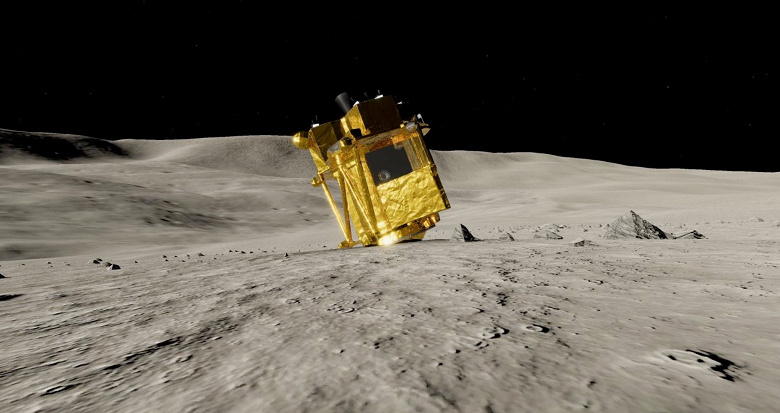Lessons for future missions and new hopes for the full operation of the Odysseus module
The SLIM mission team received confirmation that the spacecraft successfully survived the lunar night and continues to maintain communications.
The temperature of the devices was too high to carry out any operations, with the exception of short-term communication sessions. However, the Japan Aerospace Exploration Agency (JAXA) is preparing to conduct further scientific observations using SLIM.
The spacecraft flipped on its side during the lunar landing period from January 19 to 20, so its solar panels did not receive enough light to provide adequate power. To save electricity, the mission leaders decided to put the device into hibernation mode and wait for the sun's rays to hit the panels at a more favorable angle.
The team was able to communicate with the lander, take scientific measurements, and receive data from the lander for several days before putting it back into hibernation mode. At first, mission leaders feared that this might be the end for the research apparatus. After all, it was expected that during a 14-day lunar night, the temperature on the lunar surface could drop to about -130 degrees Celsius, which is significantly lower than what SLIM was designed for.
A few days ago, the lunar night ended, and SLIM solar panels were again able to charge their batteries. The JAXA team decided to check the status of the device and received encouraging news.
But conditions on the Moon turned out to be very hot: SLIM team members reported that when contact with the vehicle was resumed, the temperature of some equipment exceeded 100 degrees Celsius.
«Communication with SLIM was terminated after a short time, since it was still “lunar noon”, and the communication equipment heated up to a very high temperature. Work is currently underway to prepare for the resumption of operations as soon as the equipment temperature drops to an acceptable level», — mission team representatives reported.
Based on this information, SLIM will be ready to perform its tasks in just a few days before being put back into hibernation mode for the next lunar night. Despite this, mission engineers still believe that it — progress. During a previous scientific observation session, SLIM carried out multispectral measurements in the vicinity of the Scioli crater.
The relaunch of SLIM also allows for greater optimism about the work of the Intuitive Machines team that created the Odysseus lander. The module landed near the moon's south pole last week and is expected to operate until lunar night, which occurs in about a week. Like SLIM, Odysseus encountered landing problems. However, an «alarm signal» will also be sent to it. after the end of the lunar night, in case the electronics turn out to be more stable than its creators expected.

